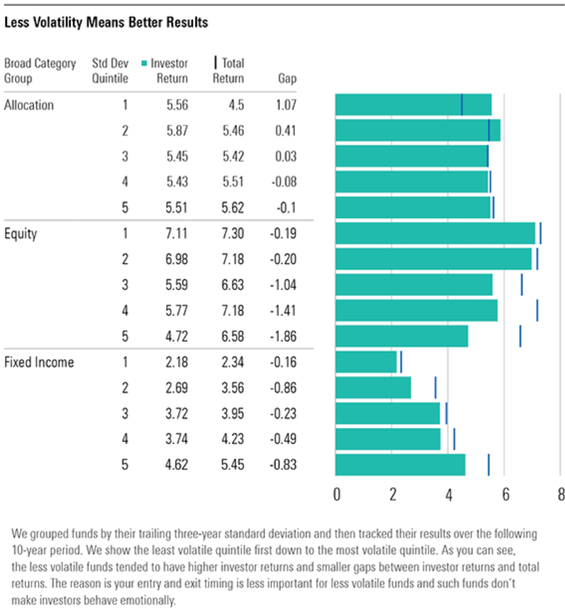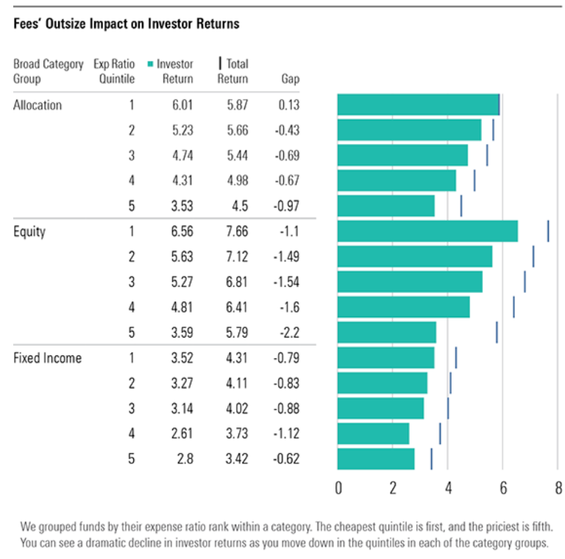Bad timing can undermine good fund selection and substantially impact investor returns. To understand how much of a difference timing can make, and the factors that contribute to this discrepancy, we took a closer look at our investor-return data.
In Morningstar Research Services’ annual paper, Mind the Gap, we evaluated investor returns to identify how the average dollar in a fund fared over a certain time period. After this period was over, we could see how much poor timing affected the average investor. The chart below shows that the average investor lost 45 basis points to timing over five 10-year periods ended December 2018.
Below, take a look at some of our key findings.
4 takeaways about investor timing
1. The average investor lost 45 basis points to timing over five 10-year periods ended December 2018. This is detailed on the chart below, which shows alternative funds had the most negative gaps. There were also noticeable negative gaps for equity and fixed-income funds.
Source: Morningstar Direct and author’s calculations. Data through 12/31/2018. The average of total returns and investor returns over five 10-year periods shows modest gaps for all but alternatives.
2. Investors consistently fared better in less-volatile funds. When we broke down funds within asset classes based on their standard deviation, we found that funds in the least-volatile quintiles consistently had higher investor returns than those in more-volatile quintiles. This suggests that “boring” funds work well because they aren’t as likely to inspire fear or greed. Also, timing simply has less impact on investor returns when a fund has lower standard deviation. (Though we sorted funds by Morningstar Category for other factors, we sorted within asset classes for this one because volatility differences within categories tend to be small.)

Source: Morningstar Direct and author’s calculations. Data as of 12/31/2018.
3. Low fees tend to lead to higher investor returns. Fees also provide a clear understanding of the gap in investment performance. As depicted in the chart below, low-cost funds tend to lead to higher total returns and higher investor returns. Costs can be good predictors of performance, so this makes intuitive sense. It’s also possible that low-cost funds may attract savvier planners and individual investors who make better use of their funds.

Source: Morningstar Direct and author’s calculations. Data as of 12/31/2018.
4. The gap between investor returns and official fund returns grows as funds increase in cost. This means that high-cost funds tend to create bad timing and lower returns, therefore emphasizing why cost should play a large role in fund selection.
These findings reflect the first phase of our research, which focuses on U.S. investments. The global report, “ Mind the Gap 2019,” provides additional insight and analysis.
This report was done in collaboration with Maciej Kowara, Matias Möttölä, Chau Pham, and Timothy Strauts.

